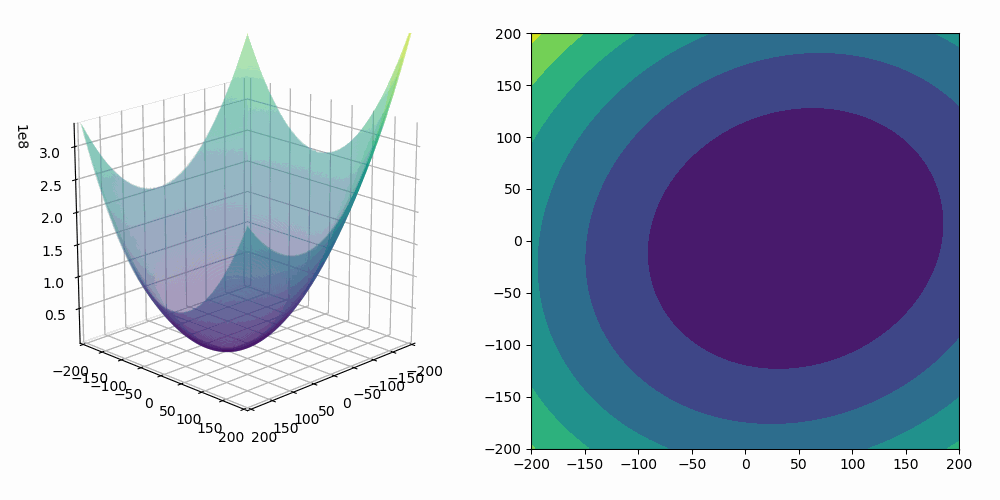Serre’s (modularity) conjecture, first made clear in their 1975 paper, Valeurs propres des opérateurs de Hecke modulo l, states the following:
Conjecture. (Serre) Let ρ:Gal(¯Q/Q)→GL2(¯Fp) be a continuous, odd, irreducible Galois representation. Then there exists normalized eigenform f∈Sk(ρ)(N(ρ),ϵ(ρ);¯Fp). with associated Galois representation ρf such that ρf≃ρ. Furthermore, N(ρ) and k(ρ) are the minimial weight and level for which there exists such a form f.
The whole point of this log is to go through the nuts and bolts to really appreciate this conjecture (which is now a theorem!) and see some of its applications. In fact, a direct application is FLT, so this gives another proof.
Modular Forms
Let h denote the upper half plane, i.e. h={z∈C:Im(z)>0}. Take z∈h and let a,b,c,d∈R with ad−bc>0. Then az+bcz+d∈h as Im(az+bcz+d)=(ad−bc)y|cz+d|2 with ad−bc>0 and |cz+d|2>0, so we have Im(az+bcz+d)>0, so az+bcz+d∈h. Thereby SL2(Z)=Γ(1)↷h via (γ,z)↦az+bcz+d where γ=(abcd). Thereby we get an equivalence relation on h via z∼z′ if there exists γ∈Γ(1) such that γz=z′. We write Γ(1)∖h, to emphasize this equivalence relation, and the set h/Γ(1) denotes the set of orbits of this action. Importantly, there is a bijection j:h/Γ(1)→C and that h/Γ(1) is isomorphic to a compact Riemann surface with one point missing. We can further extend the bijection j to an isomorphism j:h/Γ(1)∪{∞}→P1(C) of compact Riemann surfaces. To go into more detail, write h∗=h∪P1(Q), and note that Γ(1)↷P1(Q) via ((abcd),(x0:x1))↦(ax0+bx1:cx0+dx1). Defining X(1)=h∗/Γ(1). Then X(1)=h/Γ(1)∪{∞} is a compact Riemann surface.
Note that −I, where I is the identity of Γ(1), acts trivially on the upper half-plane as −Iz=−z+00−1=z, and the group PSL2(Z):=SL2(Z)/{±I}=Γ(1)/{±I} acts on h in a natural way.
Definition. Let k be a nonnegative integer. A holomorphic function f on h is a *weak modular form* of weight k if f(γz)=(cz+d)kf(z) for all z∈h where γ=(abcd)∈Γ(1) and γz=az+bcz+d.
If k were odd, then for γ=−I we would have f(γz)=f(z)=(−1)kf(z)=−f(z), and so f=0 . Therefore if f≠0, then k must be even. So the weight of any nonzero weak modular form is even. In order to check that f(z) is a weak modular form, it suffices to check that f(z+1)=f(z) and f(−1z)=zkf(z) as Γ(1) is generated by T=(1101) and S=(0−110). As any weak modular form f satisfies f(z+1)=f(z), so periodic of period 1 as a function of its real part, we obtain a Fourier series. We can write f(z)=∑n∈Zanqn where q=e2πiz. If an=0 for n<0 then f is said to be holomorphic at infinity.
Definition. A weak modular form f of weight k is a modular form of weight k if it is holomorphic at infinity. If, furthermore, we have that a0=0 in its q-expansion, then f is said to be a cusp form.
Let k be a nonnegative even integer. We write Mk(Γ(1)) to denote the vector space of modular forms of weight k for Γ(1), and we write Sk(Γ(1)) to denote the space of cusp forms of weight k over Γ(1).
Lemma. Let f be a modular form of weight k and g a modular form of weight k′, both over Γ(1). Then fg is a modular form of weight k+k′. Furthermore, ⨁∞k=0Mk(Γ(1)) is a graded algebra.
Proof. Write h=fg. Then h(γz)=f(γz)g(γz)=(cz+d)k(cz+d)k′f(z)g(z)=(cz+d)k+k′h(z). Now write f(z)=∑n∈Zanqn and g(z)=∑n∈Zbnqn. So, h(z)=∑n∈Zcnqn with cn=∑m∈Zambn−m=∑m≥0anbn−m+∑m<0anbn−m. If n<0, then n−m<0, and as f and g are modular forms, we have that an and bn both vanish, so cn=0+0=0. Therefore h=fg is a modular form with weight k+k′. We have that ⨁∞k=0Mk(Γ(1)) is a graded algebra as f∈Mk(Γ(1)) and g∈Mk′(Γ(1)) implies fg∈Mk(Γ(1)), where addition is defined component wise and M0(Γ(1))≅C acts as the scalars. The last claim follows from the following argument: Let f∈M0(Γ(1)). Then f(γz)=f(z) for all γ∈Γ(1), so f is periodic under T:z↦z+1. Hence, f(z)=F(q) where q=e2πiz, and holomorphic at the cusp implies that F is holomorphic at q=0. Thereby F is holomorphic on ¯D. By maximum modulus principle, it must obtain its maximum in the interior, so F (and hence f) must be constant.
Definition. An n-dimensional



